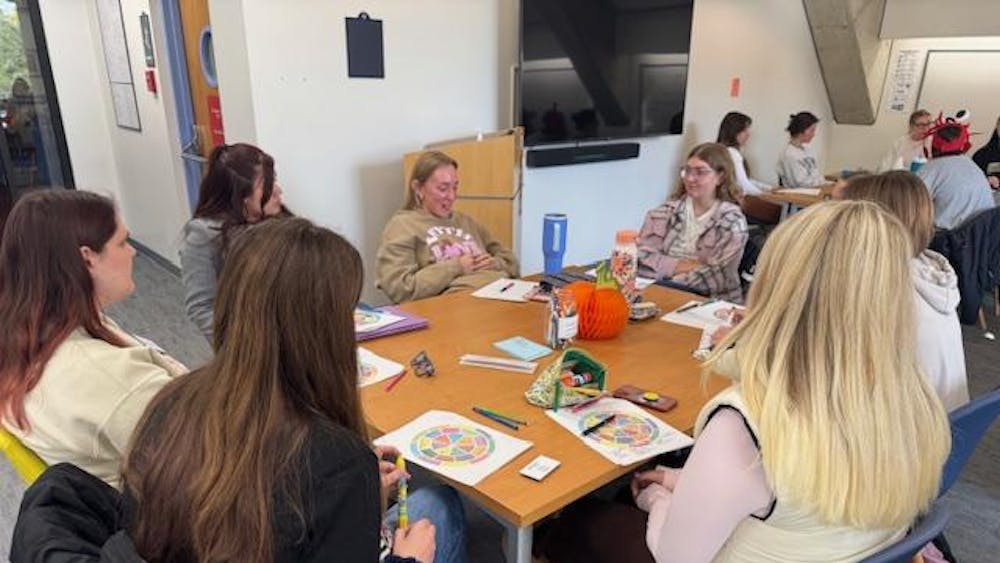"Ongoing Matter: Democracy, Design and the Mueller Report" is a project created to educate and help people interact with the information presented in the "Report On The Investigation Into Russian Interference In The 2016 Presidential Election", also known as the Mueller Report.
The exhibit is presented by the department of art, art history and design (AAHD) and was designed by co-creators Anne Berry and Sarah Martin. The project is on display in the AAHD Gallery in 214 Riley Hall until Sept. 29.
The Mueller Report was published in 2019. The report documents the findings of Special Counsel Robert Mueller’s investigation into Russian efforts to interfere with the 2016 U.S. presidential election and allegations of Donald Trump’s campaign coordinating with Russia to undermine the election.
Berry, an associate professor at Cleveland State University, said the goal of the exhibit is to make the Mueller Report more digestible for the general public.
“The objective [of the project] was to take sections of the Mueller report and make it easier to understand for a general audience through the medium that we are most familiar with, which is graphic design,” Berry said.
Another goal was for the exhibit to be collaborative. Berry said she and Martin, who is an assistant professor at the University, reached out to their design friends and had a group of designers come together to talk about the report. The group responded to the prompt by making posters, she said.
Jessica Barness, one of the designers featured in the exhibit noted that the exhibit is a more effective form of communion.
“Through visual communication, designers can convey meaning in ways that words alone cannot," she said in an email. "'Ongoing Matter'leverages the power of posters and draws upon histories of political and social issue posters."
Another designer, Andre Murnieks remarked that he enjoyed their artists' use of posters.
“Posters are a good medium to get a message out about something important and timely,” he said.

Murnieks said the biggest challenge he faced during the design process was encapsulating all of the information from the report into a few posters. Murnieks’ poster is based on a handwritten letter that was included in the Mueller Report.
"The letter is being decoded as you look at the poster,” he said.
According to Martin, the Mueller Report failed to communicate information effectively, and she hopes the art installation will help people engage with the material presented in the report in a more delightful way.
“It’s tantalizing, it’s enticing, it’s visual, it’s the exact opposite of what the report was. The augmented reality is meant to delight a viewer, it’s meant to engage someone in a report that’s dry and dense,” Martin said. “The goal is to have people engage verbatim with the language of the report.”
Martin further explained that the report was a design failure because it was 448 pages long, 12 point Times New Roman font, contained legal jargon that would be unfamiliar to the general reader and the original report was later redacted.
“A bad design can shape the future. It can change how people think about things and respond to things,” Martin said.
The exhibit is meant for everyone and it is a nonpartisan, grassroots design initiative aimed at encouraging people to engage with the government, Martin said.
Berry explained that there was a public interest and media frenzy surrounding the report. She also stated the exhibit is an investigation of how information is presented and interpreted and serves as “an investigation about design and design solutions.”
“The content is political, but our approach has been an investigation of the imagery and the language of what’s buried in the report,” Berry said. “We are trying to emphasize that this is a case study about how important information is being communicated. The larger issue is how government entities communicate information.”









